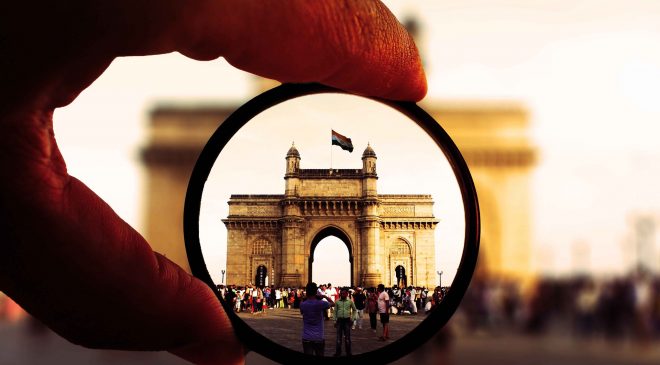
Data will play an important role in helping the country economically recover last uptick of COVID-19 cases.
As India hits new staggering COVID-19 numbers and nation-wide lockdown implemented across the country, the pandemic has revealed a systemic flaw in the how the country applied city-level data to guide policymaking.
Across to an article featured in the World Economic Forum Indian cities will be vital to the economic recovery, accounting for nearly 70 per cent of the country’s GDP by some estimates. As India rebuilds, embedding strong city data policies within urban governance will be critical. Doing so would not only ensure faster recovery from the COVID-19 pandemic, but also allow Indian cities to reach their economic potential. The lack of information alongside a largely compliance-driven, makeshift approach to prior data-collection drives have negatively impacted governance in a large way. The COVID-19 pandemic specifically highlighted inadequate urban service delivery brought about by information gaps in three areas: public health, transportation, and the protection of migrant populations.
According to the authors of the article formulating long-term systematic city data collection policies is key. These include:
The importance of mobility: While COVID-19 highlighted how data gaps impede disaster response, it is important to remember that information on the demand and supply of healthcare services is needed to improve the day-to-day functioning of urban public health systems as well. This requires systems to be set up for the real-time collection and collation of information on disease incidence, services demanded, quality of existing facilities and personnel, etc. Such systems should accommodate the integration of alternative sources of information too, given their successful use during the COVID-19 pandemic.
Removing data silos and encouraging collaboration: Recent positive developments with the Ministry of Housing and Urban Affairs launching schemes such as the National Urban Digital Mission and the Indian Urban Data Exchange.
These schemes aim to allow a free flow of datasets between cities, removing data silos and encouraging collaboration on data-driven policies going forward. Moreover, these new initiatives aim to base data-collection efforts on relevant and actionable use cases of such information. If the method of data – including metadata – collection is transparent and can be reproduced, less-factual data could be exposed for what it is. Such a structural shift in thinking about data is essential.
Other structural changes include:
- The pandemic has caused an increase in last-mile deliveries that are likely to persist.
In 2020, business-to-consumer parcel deliveries have risen by about 25 per cent. The report suggests that part of this increased demand will be durable, with at least 10 per cent-20 per cent of the growth remaining post-pandemic. - Consumers increasingly buy new types of products online and consider environmental and health impact when buying.
As consumers continue to buy a wider array of goods online, they are also becoming more ecologically aware. For example, 56 per cent of millennials cite environmental protection as the reason for choosing alternatives to home delivery. - Decarbonization of last-mile deliveries has accelerated.
Companies and cities have ramped up commitments to make emission-free deliveries, while many pandemic-related economic stimulus packages, especially in the European Union and China, contain provisions to support green mobility and goods transport. - Faced with budget challenges and increased transport needs, cities steer last-mile transitions.
Many cities, like Seattle and Boston, have started to repurpose kerb space to designated delivery pick-up. Others, including Santa Monica and Amsterdam, are taking bold action on cleaner delivery with “zero-emission delivery zones” and electric vehicle charging infrastructure. - Proven technologies are fuelling the last-mile ecosystem revolution.
While disruptive new technologies, such as drones and delivery robots, will continue to emerge, the last-mile revolution is happening now as proven technologies scale up. The likes of parcel lockers and data sharing for load pooling are being adopted around the world as the costs of implementation decrease - New business models emerge to meet increased demand for sustainable delivery vehicles.
Certain logistics companies are now offering services to online retailers, which will help them identify the delivery routes most suited to make the immediate transition to electric delivery vehicles.
Role of Indian companies
In view of rising Covid-19 cases and restrictions imposed in various parts of the country, financial institutions like HDFC Bank announced the availability of Mobile Automated Teller Machines (ATMs) across India to assist customers during the lockdown. At restricted / sealed areas, the Mobile ATMs will eliminate the need for general public to move out of their locality to withdraw cash.
During the lockdown last year, HDFC Bank successfully deployed mobile ATMs in over 50 cities and facilitated lakhs of customers in availing cash to meet their exigencies.
Customers can conduct over 15 types of transactions using the Mobile ATM, which will be operational at each location for a specific period. The Mobile ATM will cover 3-4 stops in a day.
All necessary precautions in terms of maintaining social distancing while queuing for the ATM and sanitisation are being taken to ensure safety of staff and customers.
The bank has also converted three of its training centres based out of Bhubaneswar, Pune, and Gurugram into isolation facilities.
These facilities have been equipped with first line assistance and will have round the clock nurses and visiting doctors. Immediate medical help from a nearby hospital will be made available if required. These are part of a host of measures taken by the Bank to offer holistic care to its employees and their dependents.
News service Reuters noted, India’s giant IT firms in Bengaluru and other cities have set up COVID-19 “war-rooms” as they scramble to source oxygen, medicine and hospital beds for infected workers and maintain backroom operations for the world’s biggest financial firms.
Banks including Goldman Sachs (GS.N) and Standard Chartered (STAN.L), who run much of their global back office operations from large office parks in Bengaluru, Chennai or Hyderabad, have put in place infrastructure to vaccinate thousands of employees and their families when age restrictions are lifted on May 1.
According to Reuters, workers at technology service providers Accenture, Infosys and Wipro teams are working 13-14 hours daily, under growing pressure and struggling to deliver on projects as staff call in sick and take time off to care for friends and relatives.
“They play down any threat of a collapse in operations – but at stake if the surge continues is the infrastructure put in place by the world’s biggest financial companies in cost-cutting drives that have left them deeply reliant on the big Indian offices,” noted Reuters.




